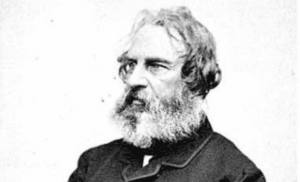In this video, Jason Meyer makes the case from Ephesians and Revelation that our culture’s call for mere tolerance is insufficient. The church alone can affect true racial harmony.
We hear a lot of talk in our day about ethnic differences, and therefore, our world offers a solution to us for all these differences called “ethnic tolerance,” or “racial tolerance.” This solution claims that somehow it’s okay to gather into groupings of like-minded people, and then in the differences, you just tolerate one another. And we say, as a church, that according to Revelation 5:9, the church has something so much better called “racial reconciliation” because the blood of Christ has purchased a people for God from every tribe, tongue, people, and nation. And therefore, if we pray “on Earth as it is in heaven,” (Matt. 6:10) what we want is racial reconciliation.
By the blood of Christ, we know that this message means so much more because we know it means so much more to say to somebody, “I love you as family,” rather than, “I tolerate you as different.” This is what Christ died for. We worship a God who is not a white evangelical; he’s not Hispanic; he’s not black. We have a Savior who has come and purchased every people, every tribe, every language, and we desire that the church would look more like that.
And within ethnic and racial reconciliation, therefore, we can have ethnic harmony. We can have all the ethnicities created by God as an individual instrument playing together in a symphony, in harmony, and learning to enjoy it, learning to enjoy each other’s differences.
The way that this dawned on me one day was a very unlikely place, it was while my kids were watching Dora the Explorer, and Diego, the animal rescue guy. My kids were watching it and I was watching it for the first time. The pace of it is very slow because it’s a children’s show.
Dora asks, “Do you see Baby Jaguar?”
“Yeah,” I think to myself.
“Do you see Baby Jaguar?”
“Yes, now let’s move on. This is obvious.”
“Do you see Baby Jaguar?” Dora asks a third time.
“Yes, could we please just move on?”
But then I turned and looked at my kids and the way they were engaging with this.
“Do you see Baby Jaguar?” Dora asks again.
“Yeah, yeah. Look!” my kids respond with excitement.
And suddenly, something happens. Something clicked from me in that moment. I wasn’t enjoying Dora, I was enjoying their enjoyment of it. I was enjoying their enjoyment because they’re family. And suddenly, I wanted them to have that. Now I wanted them to choose Dora so I could enjoy this family dynamic with them.
And it happens like this in the church. I saw this at a recent gathering when our worship pastor asked, “What does holiness mean across different ethnicities when you sing? Maybe for majority-culture churches, it’s something slow and reflective or we just sing, ‘Holy, Holy, Holy.'” And then, he gave an example in an African-American context of what holiness singing is. He started tapping his foot and snapping his fingers, and I saw people of color in the front row come to life. Their faces lit up and they were jamming along and snapping along. And it hit me in my heart: Who wouldn’t want that? At some point, in our services corporately together, what blood-bought child of God wouldn’t want another child of God to have the opportunity to flourish as part of the family, have their face light up, and say, “I can belong here. I can flourish as family.” They shouldn’t have to go through the kind of ethnic exhaustion that many people of color have to go through in our churches because they’re expected to assimilate and adjust and not have their preferences met.
The church can do better. And Revelation 5 says this isn’t a dream, this is a promise. It’s blood-bought. This is where all of history is headed and we, as a church, have the joy of taking the hard steps to get there now.




























